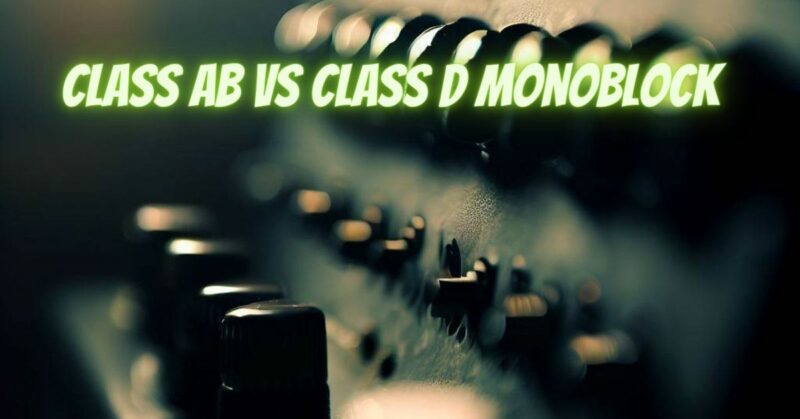The world of audio amplification is marked by a diverse array of technologies, each with its unique strengths and characteristics. When it comes to monoblock amplifiers, the choice between Class AB and Class D architectures is a pivotal decision that significantly influences sound quality, efficiency, and overall performance. In this article, we’ll delve into the differences between Class AB and Class D monoblock amplifiers, helping you make an informed choice that aligns with your audio preferences and system requirements.
Class AB Monoblock Amplifiers: The Blend of Fidelity and Efficiency
Class AB monoblock amplifiers combine elements of both Class A and Class B designs to strike a balance between sound quality and efficiency. These amplifiers utilize two sets of transistors—one for amplifying the positive half of the input signal and another for the negative half. This design minimizes crossover distortion and provides advantages such as:
Advantages:
- Sound Quality: Class AB monoblock amplifiers offer high-quality sound reproduction with reduced crossover distortion compared to pure Class B designs. This results in improved clarity and accuracy.
- Efficiency: While not as efficient as Class D amplifiers, Class AB monoblocks are more efficient than pure Class A designs. They strike a balance between sound quality and power consumption.
- Dynamic Range: Class AB amplifiers excel in handling dynamic music passages and transients, making them well-suited for a wide range of musical genres.
Disadvantages:
- Heat Generation: Due to their continuous operation, Class AB monoblocks can generate significant heat, which might require effective cooling mechanisms.
- Efficiency: Although more efficient than Class A designs, Class AB monoblocks are less efficient compared to Class D amplifiers, especially during lower power demands.
Class D Monoblock Amplifiers: The Efficiency Pioneers
Class D monoblock amplifiers are known for their exceptional efficiency and compact size. These amplifiers use pulse-width modulation (PWM) to rapidly switch the output transistors on and off, allowing them to operate at a high efficiency level, especially during low-power demands.
Advantages:
- Efficiency: Class D monoblocks are highly efficient, producing less heat and consuming less power during operation. This efficiency makes them suitable for mobile and space-constrained applications.
- Compact Design: The efficient design of Class D monoblocks enables manufacturers to create smaller and more compact amplifiers, making them ideal for installations with limited space.
- Heat Generation: Due to their switching operation, Class D monoblocks generate significantly less heat compared to Class AB designs, which contributes to their longevity.
Disadvantages:
- Sound Quality: While modern Class D monoblocks have made substantial advancements in sound quality, some audiophiles still perceive subtle differences in sonic performance compared to Class AB amplifiers.
- Complexity: The design complexity of Class D monoblocks, involving PWM modulation and filtering, can introduce challenges related to distortion and noise.
Ideal Application Scenarios:
- Choose Class AB Monoblocks When:
- You prioritize a balance between sound quality and efficiency.
- High-quality sound reproduction is essential for your audio setup.
- You require an amplifier with good dynamic range and transient response.
- Choose Class D Monoblocks When:
- Efficiency and compact size are critical factors.
- You’re looking for an amplifier that generates minimal heat, making it suitable for mobile or small-space installations.
- You’re willing to embrace the advancements in sound quality that modern Class D amplifiers offer.
The choice between Class AB and Class D monoblock amplifiers boils down to your preferences, audio requirements, and intended application. Class AB monoblocks offer a balanced blend of sound quality and efficiency, making them versatile for a range of audio setups. On the other hand, Class D monoblocks prioritize efficiency, making them ideal for installations where space and heat generation are concerns. By understanding the unique characteristics of both amplifier classes, you can select the monoblock amplifier that best complements your sonic aspirations and aligns with your audio system’s demands.


